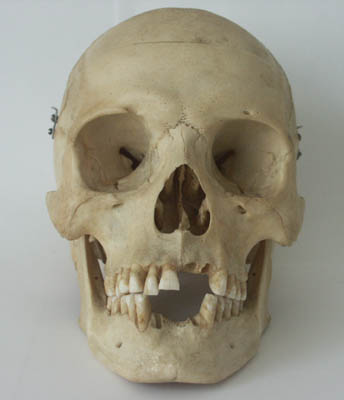transcendental anatomy on:
[Wikipedia]
[Google]
[Amazon]
Transcendental anatomy, also known as philosophical anatomy, was a form of comparative anatomy that sought to find ideal patterns and structures common to all organisms in nature. The term originated from naturalist philosophy in the German provinces, and culminated in Britain especially by scholars
 Transcendental anatomists theorized that the bones of the skull were "cranial vertebra", or modified bones from the vertebrae. Owen ardently supported the theory as major evidence for his theory of
Transcendental anatomists theorized that the bones of the skull were "cranial vertebra", or modified bones from the vertebrae. Owen ardently supported the theory as major evidence for his theory of
Robert Knox
Robert Knox (4 September 1791 – 20 December 1862) was a Scottish anatomist and ethnologist best known for his involvement in the Burke and Hare murders. Born in Edinburgh, Scotland, Knox eventually partnered with anatomist and former teach ...
and Richard Owen, who drew from Goethe
Johann Wolfgang von Goethe (28 August 1749 – 22 March 1832) was a German poet, playwright, novelist, scientist, statesman, theatre director, and critic. His works include plays, poetry, literature, and aesthetic criticism, as well as tr ...
and Lorenz Oken
Lorenz Oken (1 August 1779 – 11 August 1851) was a German naturalist, botanist, biologist, and ornithologist.
Oken was born Lorenz Okenfuss (german: Okenfuß) in Bohlsbach (now part of Offenburg), Ortenau, Baden, and studied natural history ...
. From the 1820s to 1859, it persisted as the medical expression of natural philosophy before the Darwinian revolution.
Amongst its various definitions, transcendental anatomy has four main tenets:
* the presupposition of an Ideal Plan among the multiplicity of visible structures in the animal and plant kingdom, and that the Plan determines function
* the Ideal Plan acted as a force for the maintenance of anatomical uniformity (as opposed to diversity-inducing forces of Nature)
* the belief that this ''a priori'' Plan was discoverable
* the desire to discover universal Laws underlying anatomical differences.
History
Johann Wolfgang Goethe was one of many naturalists and anatomists in the nineteenth century who was in search of an Ideal Plan in nature. In Germany, this was known as ''Urpflanze'' for the plant kingdom and ''Urtier'' for animals. He popularized the term "morphology
Morphology, from the Greek and meaning "study of shape", may refer to:
Disciplines
* Morphology (archaeology), study of the shapes or forms of artifacts
* Morphology (astronomy), study of the shape of astronomical objects such as nebulae, galaxies ...
" for this search. Transcendental anatomy first derived from the naturalist philosophy known as ''Naturphilosophie''.
In the 1820s, French anatomist Etienne Reynaud Augustin Serres (1786–1868) popularized the term ''transcendental anatomy'' to refer to the collective morphology of animal development. Synonymous expressions such as philosophical anatomy, higher anatomy, and transcendental morphology also arose at this time.
Some advocates regarded transcendental anatomy as the ultimate explanation for biological structures, while others saw it as one of several necessary explanatory devices.
Vertebral theory
homology
Homology may refer to:
Sciences
Biology
*Homology (biology), any characteristic of biological organisms that is derived from a common ancestor
* Sequence homology, biological homology between DNA, RNA, or protein sequences
*Homologous chrom ...
.
The theory has since been discredited.
References
{{anatomy Anatomy Comparative anatomy Metatheory of science Naturalism (philosophy) Non-Darwinian evolution